Drought conditions at highest level in parts of B.C. as province warns of tightening water restrictions, Two-thirds of the province’s water basins are now at Level 4 or 5 drought by CBC News with files from The Canadian Press, Jul 13, 2023
Leaders in British Columbia are sounding the alarm about looming water scarcity and future use restrictions as drought levels in parts of the province have been elevated to the most severe end of the scale.
Bowinn Ma, the minister of emergency management and climate readiness, along with representatives from the River Forecast Centre, the ministries of agriculture and forestry, and the B.C. Wildfire Service laid out the situation during a news conference Thursday.
According to a report from the River Forecast Centre, four out of 34 water basins are now at Drought Level 5 and 18 are at Level 4. The provincial scale goes from zero to five.
“That means over two-thirds of our water basins are in Level 4 or 5,” said Ma. “We are anticipating a very serious drought season that will require action for everyone.”
An East Asian woman speaks at a news conference.
Basins experiencing Level 5 drought are located in Fort Nelson, Bulkley Lake and east and west Vancouver Island.
Due to the severity of the situation, Ma said she is speaking with local government authorities and First Nation leaders to encourage communities to escalate water use restrictions across the province and that “it is likely more restrictions are on the way.”
“We need people to be calm, we need people to care about this, and we need people to conserve,” said the minister.
The report by hydrologist Jonathan Boyd says most of B.C. has received rainfall over the past year of between 40 and 85 per cent of annual average precipitation.
It says stream flows measured this week at some rivers on Vancouver Island and in northwestern B.C. are not only at the highest drought-level category, Level 5, other major rivers in the Interior and Kootenays are getting close.
Boyd said Metro Vancouver and the Sunshine Coast regions are already at Drought Level 4.
“It really started because of how dry it was [last] summer and fall, and we did experience some of the lowest flows in the province in the fall and winter that we’ve ever had,” said Boyd.
The B.C. government began sounding the alarm about summer drought and urging people to save water in June.
Earlier this week, Ma urged B.C. residents to take measures to conserve water, including watering lawns sparingly, taking shorter showers and only doing laundry with a full load.
Q&A
Take shorter showers, run only full washing loads ahead of water restrictions, B.C. minister advises
Farmers in Sunshine Coast say they want to be exempt from water restrictions during droughtPremier David Eby and Ma have both said the situation is serious, and much of B.C. has never before experienced the current levels of drought this early in the summer.
Ecosystems and the economy are expected to feel the impacts, with the agriculture and oil and gas industry already feeling the brunt.
Water-intensive oil and gas operations have already had restrictions imposed on them by the B.C. Energy Regulator.![]() Those restrictions are likely useless because the oil, gas and frac industry hoards water, and has many legal and illegal dams full for precisely the intent to keep frac’ing during extreme drought and or water scarce conditions. More importantly, it’s been publicly known since 2012, likely privately before that by industry, 25-100% of water injected by frac’ers is permanently lost to the hydrogeological cycle.
Those restrictions are likely useless because the oil, gas and frac industry hoards water, and has many legal and illegal dams full for precisely the intent to keep frac’ing during extreme drought and or water scarce conditions. More importantly, it’s been publicly known since 2012, likely privately before that by industry, 25-100% of water injected by frac’ers is permanently lost to the hydrogeological cycle.
Photos below of frac’ers hoarding water in BC by Will Koop, BC Tapwater Alliance.
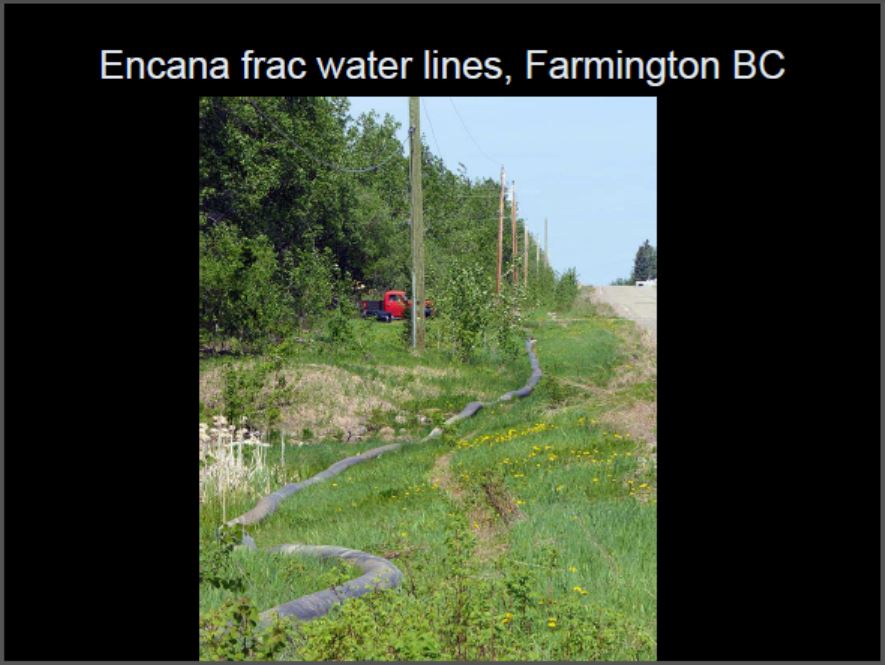

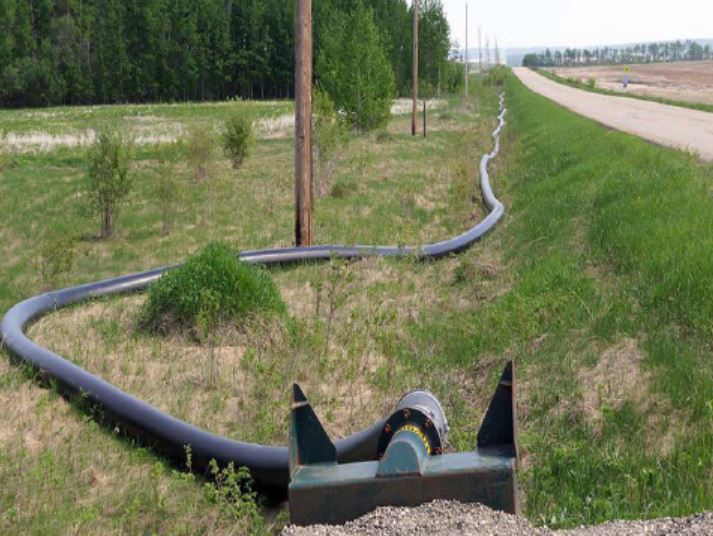


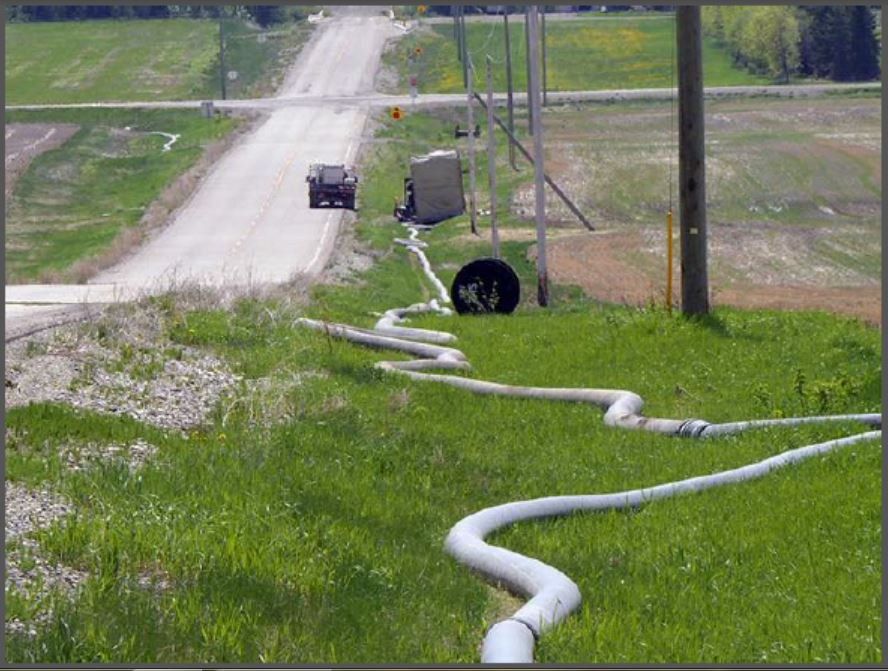

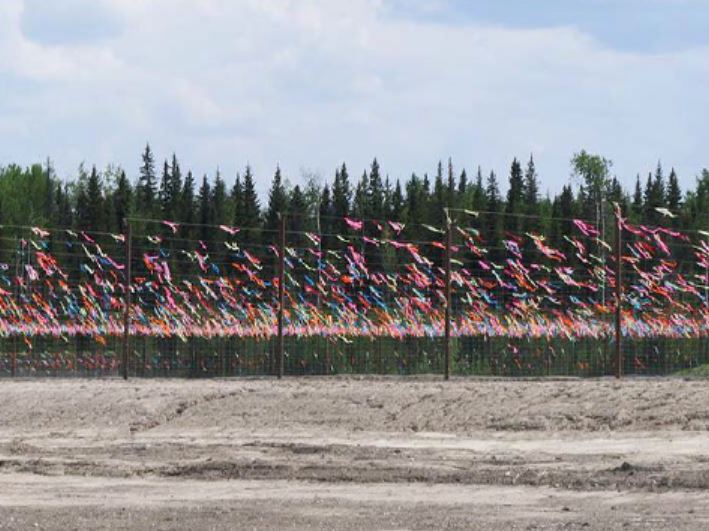



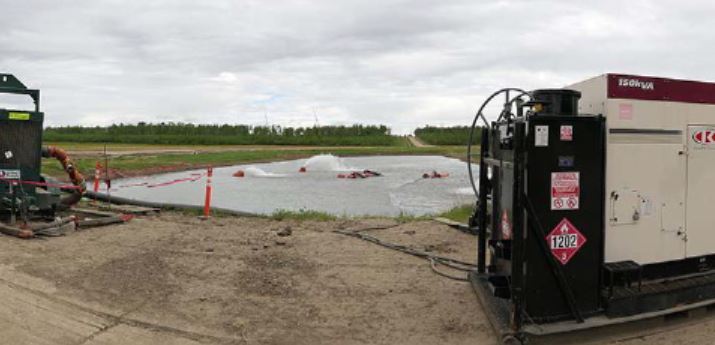
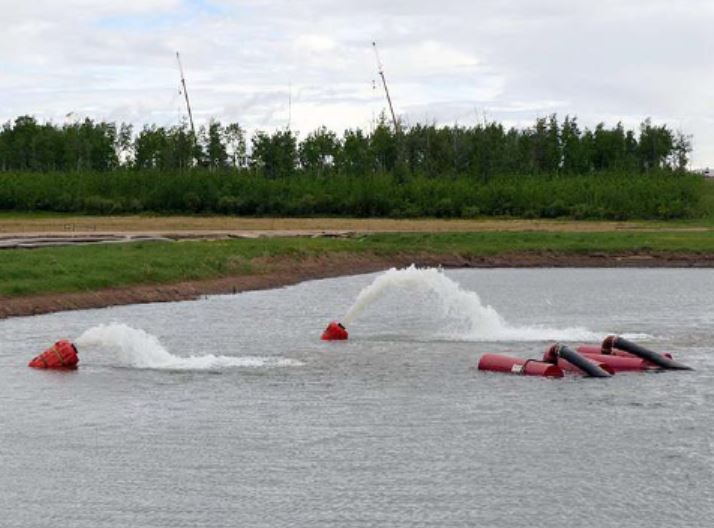
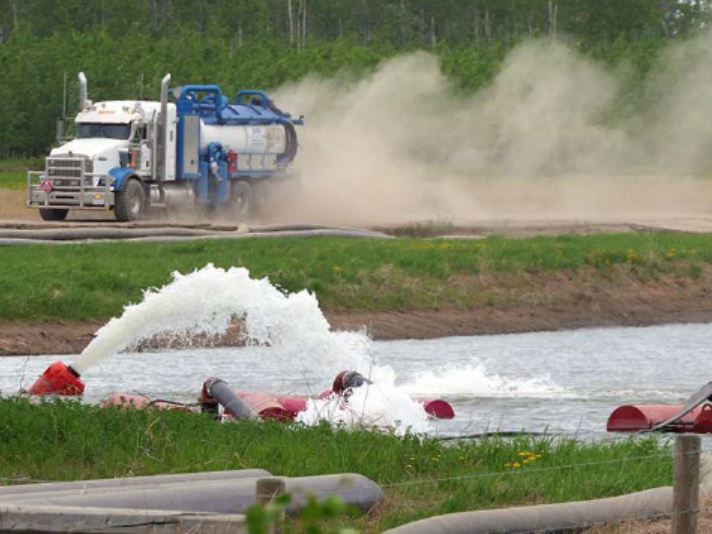
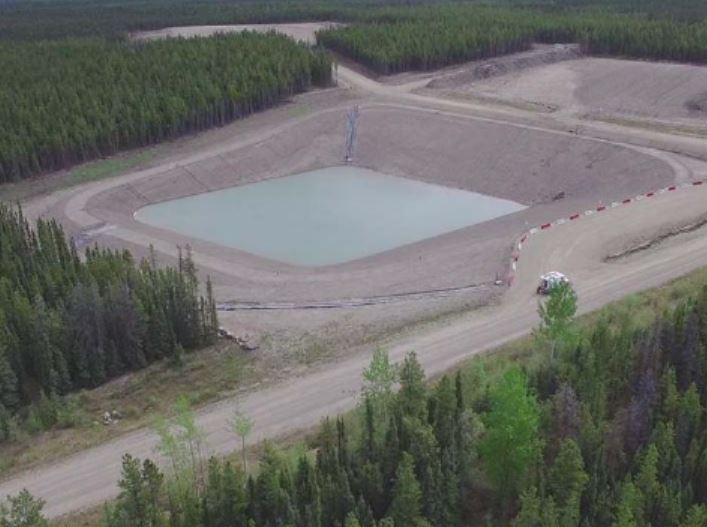
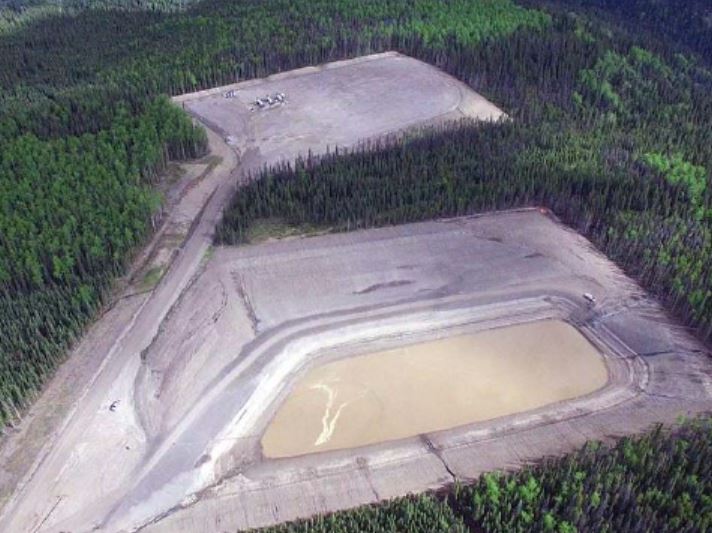
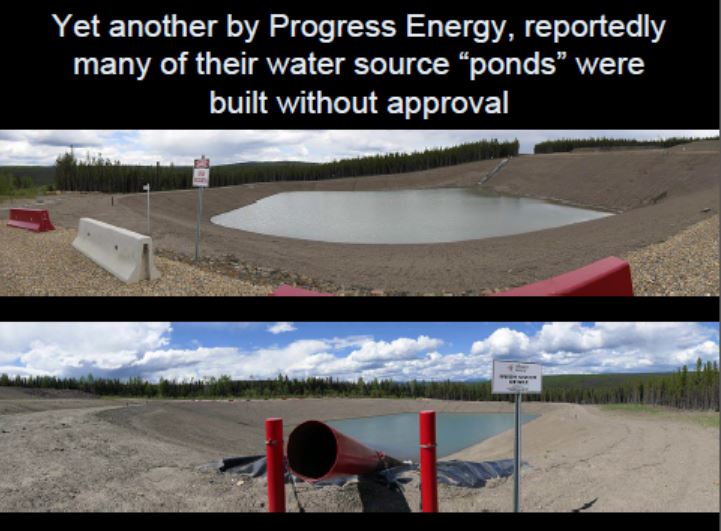
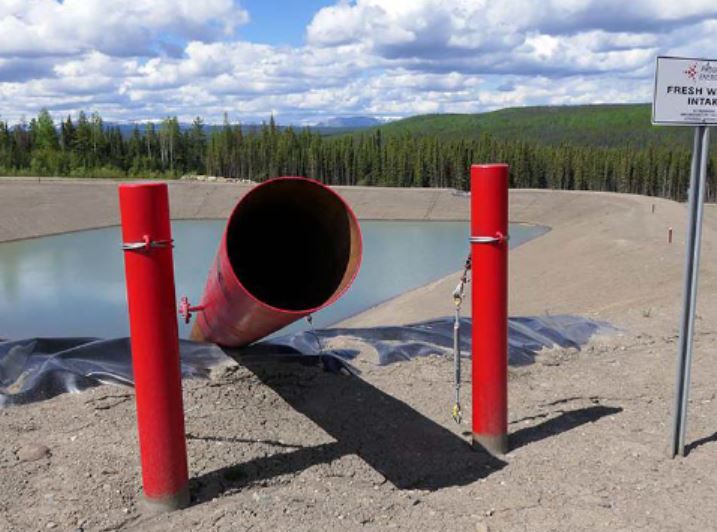
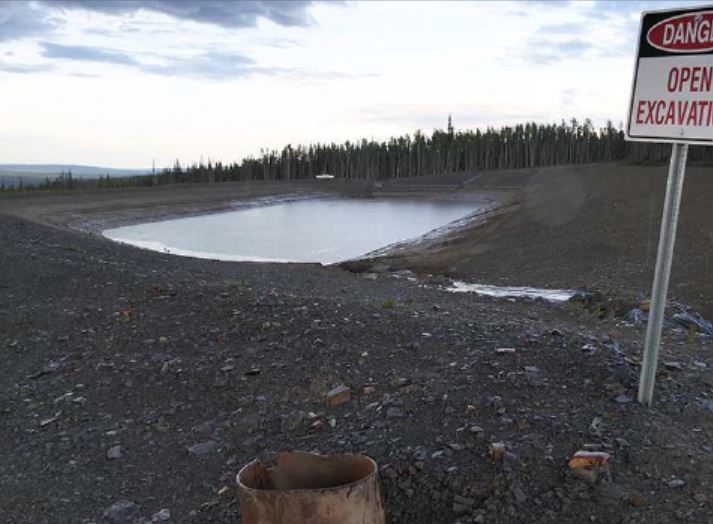
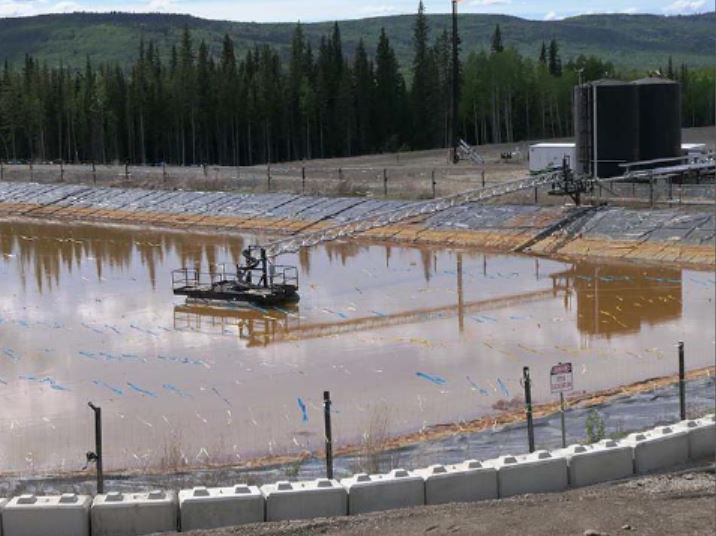
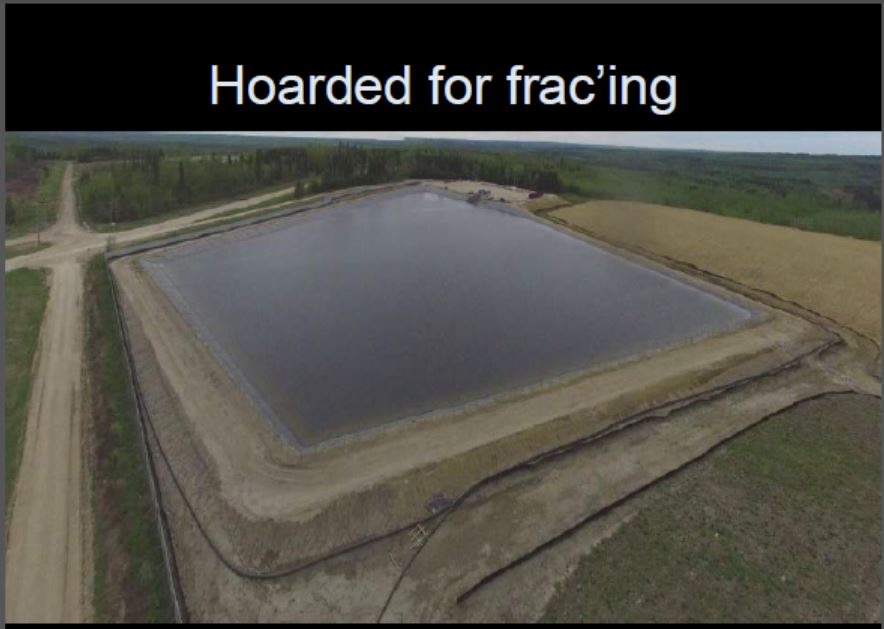
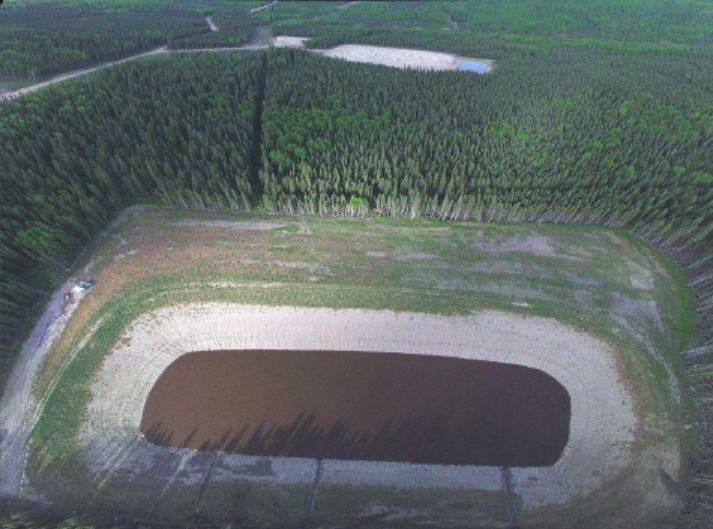
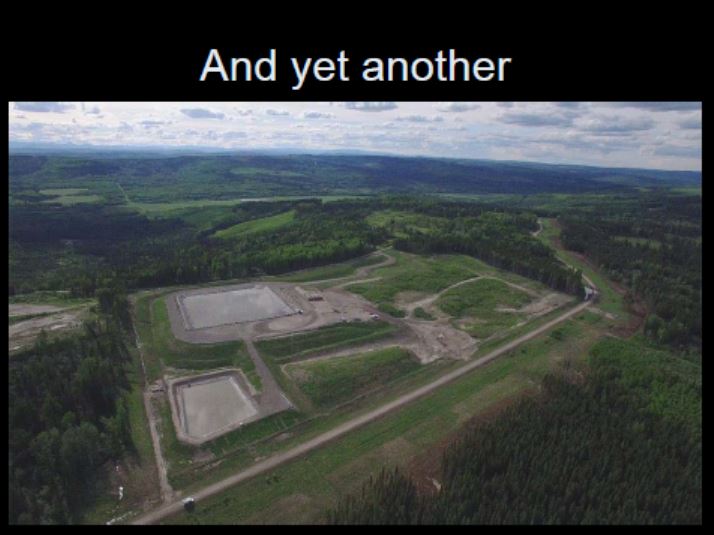
I’ve can’t repeat this often enough, yet no authority gives a shit or has the courage to give a shit, and media are not reporting it:
Billions of gallons of fresh water are being lost permanently to the hydrogeological cycle in Canada by frac’ers.
How much is this surface water loss is drying of forests and worsening wildfires? Never mind the masses of flammable methane frac’d loose and leaking everywhere companies frac (via the ground to surface and via wellbores, other infrastructure)?
Frac’ers and their enablers energy regulators and politicians (of all stripes) in B.C. and Alberta don’t give a shit about groundwater, us, our loved ones, or our drinking water supplies. If they did, like PEI does, frac’ing would have been criminalized before it began.![]()
A spokesperson for the Ministry of Agriculture said there will be challenges feeding cattle and is working with federal counterparts to assess the need and mobilize assistance.
Ma pleaded with all British Columbians Thursday to conserve water.
“I’m calling on everyone, including businesses, to follow water restrictions … every drop counts.”
Critical groundwater supplies may never recover from drought, Let this sink in by University of California – Riverside, September 30, 2021
Summary:
New research shows groundwater takes an average of three years to recover from drought — if it ever recovers at all. In the largest study of its kind, scientists found that this recovery time only applies to aquifers that aren’t touched by human activity, and the recovery time might be even longer in regions with excessive pumping.
Along with hurricanes and wildfires, there’s another important, but seldom-discussed effect of climate change — toxic water and sinking land made worse by groundwater drought.
Water from snow and rain seeps deep into the ground between layers of soil and accumulates in sponge-like underground bathtubs, called aquifers. Farmers rely heavily on this groundwater to irrigate their crops when they can’t get enough water from surface water sources.
Roughly 85 percent of Californians also rely on groundwater for some portion of their water supply. Worldwide, an estimated two billion people depend on it. However, excessive groundwater use combined with droughts has caused land surface to sink, damaging critical infrastructure including roads, buildings, and sewage and water pipes.
New UC Riverside research shows groundwater takes an average of three years to recover from drought — if it ever recovers at all. In the largest study of its kind, scientists found that this recovery time only applies to aquifers that aren’t touched by human activity, and the recovery time might be even longer in regions with excessive pumping.
For groundwater levels to recover after a drought, new precipitation requires time to percolate through the soil and recharge the depleted aquifer. The researchers show that this process can take several years longer in areas with deeper groundwater levels.
“If people pump groundwater without first letting it recharge, groundwater levels keep going down, the cost of pumping goes up, and the land sinks,” explained Hoori Ajami, UCR groundwater hydrologist and study co-author and principal investigator on this project.
Published in the Journal of Hydrology, the new study is the first to examine groundwater response to droughts on a continental scale. Previous investigations of groundwater drought have mostly relied on model simulations and covered smaller areas. This study relied on 30 years of daily measurements from 600 wells across the country.
On average, the researchers determined it takes about two years for rainwater drought to become groundwater drought, though in some cases it takes as long as 15 years. Because of the long lag time, the effects aren’t felt or seen immediately. However, they can be severe.
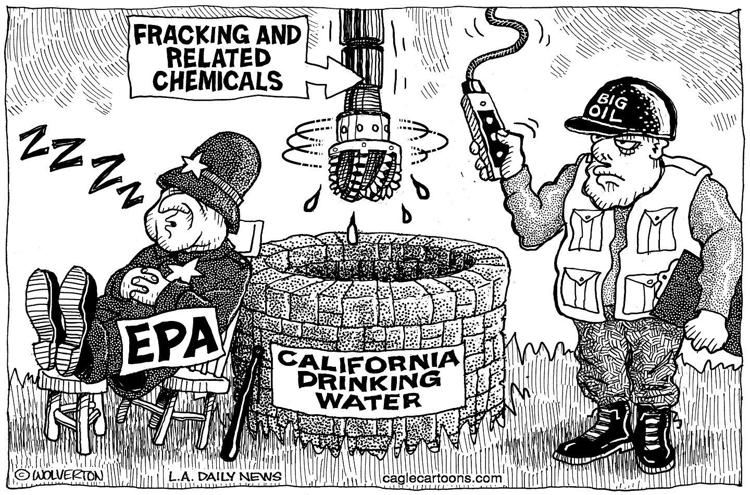
Groundwater drought combined with pumping can cause a gradual, uneven lowering of the land surface called subsidence. “It is a known problem in California’s Central Valley, exacerbated by climate factors and excessive water pumping,” Ajami said. “Subsidence causes irreversible damage to infrastructure, buildings and roads.”
As the ground shifts and water level declines, contaminants in the soil, like arsenic, can mobilize and poison the water. In coastal areas, aquifers depleted by drought and pumping can fill up with salty sea water, making groundwater unusable for drinking or farming.
“You start with a problem of water quantity, and you end up with a problem of water quality,” Ajami said.
“Excessive pumping lowers the groundwater level, creating a downward spiral in which restoring the aquifer becomes harder and harder,” added study co-author Adam Schreiner-McGraw.
To reduce the damage from prolonged droughts that are an inevitability as the planet continues to warm, the researchers have several recommendations. Most climate models show rain becoming more intense. Storing rain waters could recharge aquifers, speeding up the recovery process.
The researchers also suggest that farmers improve irrigation efficiency and switch perennials like almonds, pistachios, and walnuts to annual, less water-intensive crops in areas where groundwater depletion is severe.
“We need to improve our climate projections to include groundwater, so that we can better assess what we have and how to protect it,” Ajami said. “There are ways to better manage what we have.”
Long-term, non-anthropogenic groundwater storage changes simulated by three global-scale hydrological models by Bailing Li, Matthew Rodell, Justin Sheffield, Eric Wood & Edwin Sutanudjaja, Jul 24, 2019, Scientific Reports volume 9, Article number: 10746 (2019)
Abstract
This study examined long-term, natural (i.e., excluding anthropogenic impacts) variability of groundwater storage worldwide. Groundwater storage changes were estimated by forcing three global-scale hydrological models with three 50+ year meteorological datasets. Evaluation using in situ groundwater observations from the U.S. and terrestrial water storage derived from the Gravity Recovery and Climate Experiment (GRACE) satellites showed that these models reasonably represented inter-annual variability of water storage, as indicated by correlations greater than 0.5 in most regions. Empirical orthogonal function analysis revealed influences of the El Niño Southern Oscillation (ENSO) on global groundwater storage. Simulated groundwater storage, including its global average, exhibited trends generally consistent with that of precipitation. Global total (natural) groundwater storage decreased over the past 5–7 decades with modeled rates ranging from 0.01 to 2.18 mm year−1. This large range can be attributed in part to groundwater’s low frequency (inter-decadal) variability, which complicates identification of real long-term trends even within a 50+ year time series. Results indicate that non-anthropogenic variability in groundwater storage is substantial, making knowledge of it fundamental to quantifying direct human impacts on groundwater storage.
Introduction
Groundwater is crucial for meeting agricultural, industrial and municipal water needs, especially in arid, semi-arid and drought impacted regions where other types of fresh water are scarce1. Groundwater also sustains streams and rivers during dry periods through its contributions to baseflow2. Nevertheless, groundwater variations and their relationship to climate change are poorly understood at the global-scale due to the unavailability of observational data3,4. A few studies based on in situ observations have revealed the influence of large-scale climate signals such as the El Niño Southern Oscillation (ENSO) and Pacific Decadal Oscillation (PDO) on aquifers in the U.S.5,6,7,8 and Canadian Prairies9. Outside of North America similar studies are lacking because groundwater measurements typically are inaccessible because their distribution is restricted10. Further complicating matters, in situ observations are often unsuitable for climate studies because of short and discontinuous records, because they are made in confined aquifers where groundwater heads are controlled by factors other than climate or are affected by groundwater pumping11. The lack of knowledge about groundwater response to climate change has been noted in the 5th assessment report (AR5) of Intergovermental Panel on Climate Change12 (IPCC).
It has been suggested that groundwater responses to future climate scenarios, at the global scale, will vary spatially, mainly depending on recharge rates, with arid and semi-arid areas more vulnerable than wetter areas such as the northern high latitudes, where recharge may increase4. Regional-scale studies support these predictions. A study found that projected changes in precipitation and temperature did not have significant impacts on groundwater recharge in the Grand Forks aquifer of British Columbia, Canada13. Another study showed that groundwater recharge in the drier and warmer part of the High Plains Aquifer exhibited higher sensitivity to rainfall changes than in the cool and wetter part of the aquifer and that the rate of changes in groundwater recharge amplified that of changes in precipitation14. Similarly, it was predicted that climate change would reduce recharge in the southern and mountainous parts of the western U.S., while recharge would be largely unchanged in the northwestern U.S15. These studies suggest that land evapotranspiration (ET), in addition to precipitation, may be an important factor controlling groundwater responses to climate change. Nevertheless, they are mainly focused on precipitation and temperature as the drivers of groundwater change, without considering other factors such as wind and air pressure for which changes are difficult to generalize due to internal variability and regional variation16. As a slower component of the hydrological cycle, groundwater may reflect small but persistent changes in the climate system8. To better predict the future, we need to improve our understanding on how groundwater has responded to changes that have occurred in the climate system over the past several decades. Such studies are noticeably lacking and limited to small spatial17 or short temporal scales18,19.
In this study, we investigate variations in global groundwater storage simulated by three global-scale hydrological models, the Catchment land surface model20 (CLSM), the WaterGAP21 and PCRaster Global Water Balance22 (PCR-GLOBWB) water resource models. CLSM is a physics based model that was developed for coupled land and atmospheric modeling including seasonal weather forecasting at NASA Goddard Space Flight Center with an emphasis on land-atmosphere fluxes, which are constrained by both energy and water balances. WaterGAP and PCR-GLOBWB are two leading models developed for assessing the spatial distribution and temporal variability of water resources around the world. They rely on empirical relations to compute all water budget components including surface water and human water use which are neglected by most land surface models including CLSM.
Forced with multiple decades of meteorological data that reflect changes in the climate system, these models are able to generate spatially and temporally continuous groundwater estimates suitable for studying climate change impacts on groundwater at regional to global scales21,23,24,25. Multi-model analysis also helps to reduce uncertainties associated with model physics and meteorological forcing fields, as trends in terrestrial water storage simulated by different models have been shown to vary considerably26. Modeled groundwater storage was evaluated using long-records of in situ data in the U.S. and modeled terrestrial water storage (TWS) was evaluated using TWS derived from Gravity Recovery and Climate Experiment (GRACE) satellites.
Because CLSM does not simulate human impacts such as groundwater abstraction, this study focuses on the temporal variability of natural (excluding anthropogenic impacts) groundwater storage changes associated with atmospheric effects (precipitation and ET). However, groundwater output from WaterGAP and PCR-GLOBWB with human water use is also analyzed in order to assess the uncertainty associated with evaluation using in situ and satellite data which may be affected by groundwater abstractions and to provide insight on the relative contributions of natural and anthropogenic groundwater variability to the total groundwater variability as groundwater depletion caused by abstraction has gained wide attention1,21,27.
…
Discussions and Conclusions
This study investigates the long-term variability of global non-anthropogenic groundwater storage and its environmental controls. Due to the scarcity of in situ groundwater observations, we analyzed simulated groundwater storage from the Catchment land surface model (CLSM), WaterGAP and PCR-GLOBWB water resource models. The outputs from these three models may be considered independent given that the model parameterizations are quite distinct and each model was driven by a different atmospheric forcing dataset. Modeled groundwater storage and terrestrial water storage (TWS) were evaluated using in situ data in the eight U.S. regions and GRACE derived TWS at the globe scale. The three output datasets compared reasonably well with the observations based on correlations greater than 0.5 in most regions, demonstrating skill in reproducing interannual variability of water storage. Output from the models was somewhat consistent, especially between CLSM and WaterGAP, owing to the more consistent precipitation data used by those two models.
Neglecting anthropogenic impacts, global total groundwater storage decreased during the past 50–70 years, at a rate of 0.25 mm year−1 based on the ensemble average. It is possible that the long-term decline is a symptom of climate change, but considering that low-frequency variability in the global groundwater storage time series and in regional groundwater of deeper aquifers45, the 50 to 67 years of simulation periods may not be long enough to identify a secular trend with confidence. This low frequency variability together with the sensitivity of trends to anomaly amplitudes that vary among models may have also contributed to the discrepancies among trends estimated by the three models. Therefore, better characterizing that low frequency variability would be valuable for improving the models and interpreting the apparent groundwater storage trends.
The EOF analysis revealed that ENSO influenced the variability of global groundwater through its control of precipitation patterns. Because ENSO also exhibits low frequency variability, it is plausible that multidecadal scale variability in global total groundwater can be partly attributed to ENSO, though more research would be needed to describe those relationships.
Our analysis shows that simulated regional and global groundwater anomalies are sensitive to trends in precipitation. Therefore, the linear trend in global groundwater reported here must be interpreted in the context of the reliability and temporal consistency of the forcing datasets, which currently remain incompletely established. For the Princeton dataset, the effectiveness of bias-correction depends on regional availability of in situ data, and may rely more on the fidelity of the NCEP/NCAR re-analysis (used as a baseline) when and where in situ data are scarce. Meteorological data tend to be scarce in the deep tropics, at high latitudes and during earlier years of the 1948–2014 period, especially for fields such as pressure and wind speed66. The GPCC and CRU precipitation data are based on gauge observations and their spatial and temporal variability and consistency may be adversely affected by changes in the numbers and locations of gauges. On the other hand, simulated ET did not exhibit a significant trend and thus was not a factor in the simulated global groundwater depletion trend.
Our analysis shows that representing groundwater abstraction for supporting irrigated agriculture increased the magnitude of the decreasing trends in global groundwater storage simulated by WaterGAP and PCR-GLOBWB. In addition, groundwater depletions became the leading mode of variability in global groundwater, surpassing ENSO. However, the resulting trends in global groundwater storage, 46.15 to 0.35 mm year−1 for WaterGAP and PCR-GLOBWB, respectively, are directly impacted by non-anthropogenic trends and the low frequency variability in global WaterGAP and PCR-GLOBWB non-anthropogenic groundwater (Fig. 7) are embedded in their corresponding global anthropogenic groundwater time series (Figs S15 and S16). This emphasizes the importance of evaluating natural groundwater variability when assessing human impacts on groundwater resources. This is particularly true for models like PCR-GLOBWB which rely on the underlying hydrological model to estimate consumptive irrigation water use.
Finally, we caution that our evaluation using in situ groundwater data was limited to regions of the U.S. that do not represent the climates of Africa, east-central Asia, and Northern Eurasia, where some of the significant groundwater storage changes were simulated. Uncertainty in simulated groundwater time series may be higher in drier climates where aquifers tend to be deeper and therefore have longer-scale variability and disconnection from the atmosphere which are difficult to model. Evaluation using GRACE data is limited to less than 15 years when GRACE was active and provides no insight on a model’s ability to separate groundwater from other TWS changes.
Study shows Earth’s groundwater mostly unrenewable by Colette Derworiz, Nov 16, 2015, Calgary Herald
An international team of hydrologists has found that much of the Earth’s groundwater isn’t renewable within a human lifetime after mapping out the important resource.
The study, published Monday in the journal Nature Geoscience, was led by Tom Gleeson at the University of Victoria with co-authors from the University of Texas, University of Calgary and University of Göttingen in Germany.
“The goal of this study was to calculate, for one of the first times, how much groundwater we have on this planet,” said Scott Jasechko, an assistant professor in the U of C’s department of geography who co-authored the study. “This is water that is held within pore spaces in rock and soils underneath our feet.
“Of all of the fresh and unfrozen water on this planet, about 99 per cent is groundwater.”
The research estimates a total volume of nearly 23 million cubic kilometres of total groundwater. To put that into perspective, if you pooled all of the groundwater in the world on top of the land, it would be 180 metres deep — almost as tall as the Calgary Tower.
Although the volume is immense, Jasechko said only a small, finite fraction of the resource is being replenished.
The study showed that six per cent of water in the uppermost portion of the Earth’s landmass is renewable within a human lifetime or 50 years.
The research comes as the global demand for water grows, particularly with climate change.
Jasechko said it provides important information for water managers and policy developers, as well as scientists, to manage groundwater resources in a more sustainable way.
“This groundwater resource is finite,” he said. “There’s only so much and developing management time horizons on decade-old timeframes is important, but we need to make sure we have a strong understanding of just how much groundwater is available.”
Groundwater is an important resource, with about two billion people worldwide relying on it for drinking water. About 40 per cent of irrigation used for food production uses groundwater, said Jasechko.
It’s also supplies water and nutrients sustaining aquatic ecosystems in lakes and rivers.
“We should use a longer time horizon when making decisions because the amount of modern groundwater is finite, vulnerable to climate change, susceptible to pollution, and needed by natural ecosystems,” he said.
The study was funded by the Natural Sciences and Research Council, Canadian Institute for Advanced Research, US National Science Foundation and the American Geophysical Union.
Most groundwater is effectively a non-renewable resource, study finds, Less than 6% of groundwater is replenished within 50 years by Emily Chung, Nov 16, 2015, CBC News
The water that supplies aquifers and wells that billions of people rely on around the world is, from a practical perspective, mostly a non-renewable resource that could run out in many places, a new Canadian-led study has found.
While many people may think groundwater is replenished by rain and melting snow the way lakes and rivers are, underground water is actually renewed much more slowly.
In fact, just six per cent of the groundwater around the world is replenished and renewed within a “human lifetime” of 50 years, reports University of Victoria hydrogeologist Tom Gleeson and his collaborators in a new study published in the journal Nature Geoscience today.
That water tends to be mainly found within a few hundred metres of the surface, where it is most vulnerable to being contaminated by pollution or depleted by higher temperatures and reduced rainfall as a result of climate change, the researchers found.![]() And massively and horrifically depleted by frac’ing, injection for enhanced oil recovery and SAGD high pressure steam frac’d bitumen extraction.
And massively and horrifically depleted by frac’ing, injection for enhanced oil recovery and SAGD high pressure steam frac’d bitumen extraction.![]()

“Groundwater is a super-important resource,” Gleeson said in an interview with CBC News. “It’s used by more than a third of the world’s population every day for their drinking water and it’s used by agriculture and industry.”
More than a third of the Canadian population relies on groundwater, including the entire population of P.E.I. and some fairly large urban centres such as Kitchener-Waterloo, Cambridge and Guelph in Ontario, Gleeson added.
Because groundwater is so important to billions of people around the world, Gleeson and colleagues at the University of Texas at Austin, the University of Calgary, and the University Gottingen were interested in finding out how much groundwater there is in the world and to get an idea of when it will run out.

Nuclear clues
Scientists had previously made a rough estimate of the amount of groundwater in the world, but no one knew how much is renewable and how quickly it’s replenished.
Gleeson and his colleagues came up with a way to figure out what groundwater was less than 50 years old. In the 1960s, during the Cold War, a number of countries were doing above-ground nuclear testing. This introduced a radioactive form of hydrogen, called tritium, into the world’s water supply.

The researchers figured that groundwater with high levels of tritium was renewed since the 1960s. Groundwater with negligible levels was older.
By looking at 3,500 measurements of tritium in groundwater from 55 countries and using computer models to trace the flow of groundwater around the world, they were able to estimate how much groundwater was young and renewable and how much was older.
They also confirmed the total quantity of groundwater around the world using a variety of data like the permeability of rock to the flow of water and how much water could be stored in different places, based on how porous the rock there was.
A look at previous estimates of total groundwater showed the crude calculations were not far off.
“When we actually went back and traced what the actual calculation, it was literally two lines of text that someone could do at a bar,” Gleeson said. “But the amazing thing was that they were right.”
His team came up with almost exactly the same number.
Plentiful but finite
They estimated that the total amount of groundwater in the world was 22.6 million cubic kilometres — enough to cover all the land on Earth to a depth of 180 metres. The amount that was renewable was no more than 1.3 million cubic kilometres or less than six per cent. But the researchers said that was likely an overestimate due to the types of rock in the areas where most of the measurements were taken. Correcting for that suggested that the actual amount of groundwater renewable within 50 years was likely only 0.35 million cubic kilometres, or enough to cover all the land on Earth to a depth of three metres.
The good news is that the amount of renewable groundwater on Earth is quite large —- three times larger than all other fresh water contained in lakes and rivers on Earth, the researchers reported.
But it isn’t evenly distributed. There was less groundwater, especially younger groundwater, in more arid regions.
Gleeson said in places like California and the U.S. Midwest, people are already using “non-renewable” water that is thousands of years old and in places such as Egypt, they’re tapping into water that may have last been renewed a million years ago. Such old water isn’t just non-renewable on human timescales — it tends to be saltier and more contaminated than younger groundwater.
In addition, overusing groundwater, either old or young, can lower subsurface water levels and dry up streams, which could have a huge effect on ecosystems on the surface, Gleeson added.
He hopes the study will help remind and motivate people to manage their groundwater resources better. “And realize that it’s finite and a limited resource that we need to respect and manage properly.“

Clarifications
- An earlier version of this story referred to most groundwater as being non-renewable, but didn’t specify clearly enough that it was non-renewable on the scale of a human lifetime, rather than on a geological timescale. In addition, it stated that groundwater could run out, but didn’t initially clarify that that was on a human timescale and only in some locations, not worldwide.Nov 18, 2015 11:11 AM ET

Refer also to:
…
A proportion (25% to 100%) of the water used in hydraulic fracturing is not recovered, and consequently this water is lost permanently to re-use, which differs from some other water uses in which water can be recovered and processed for re-use.
…
